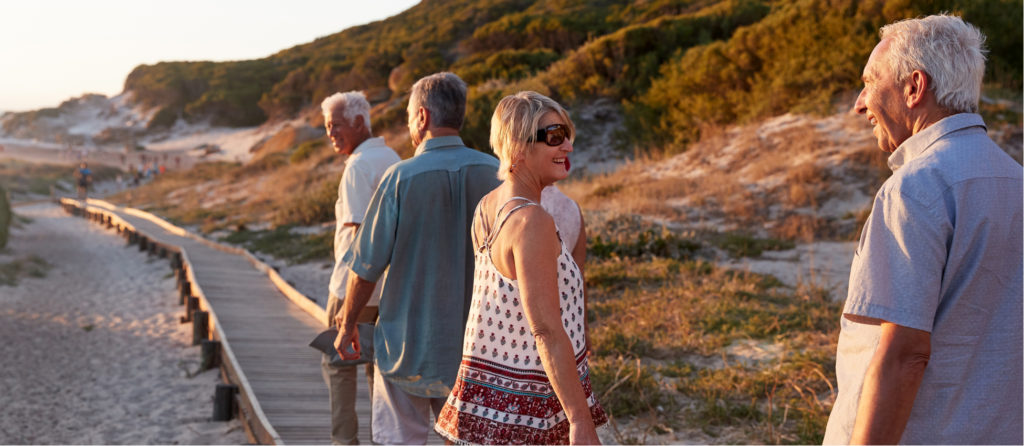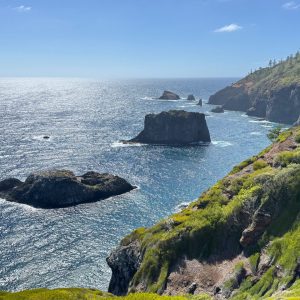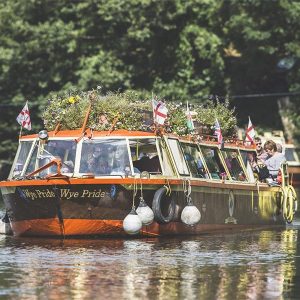An island of one’s own!
If there has ever been a time to dream, this is surely it. So, close your eyes and imagine …
Volcanic peaks, coral reefs, the heady smell of frangipani and gardenia blown on a tropical breeze. The islands of the South Pacific have a magic all of their own. By their very nature, they are private, secluded, remote, thinly scattered across the world’s biggest, deepest ocean. Among the last inhabited places on earth to be discovered by Europeans they were thought to be an earthly paradise.
They still are. There are warm lagoons that shimmer emerald and sapphire in the sun. Palm trees wave in the Trade Winds, shading empty beaches of the purest white sand. The people are welcoming, relaxed and generous with their time and their smiles. For anyone who has ever dreamed of a desert island escape, this has always been the ultimate destination. Now, though, it comes with added luxury – tiny islands that comprise just one resort where excellence comes as standard and every wish is granted with a smile. Bali Hai indeed.
Fiji
Royal Davui sits in Fiji’s Beqa (pronounced Bengga) Lagoon, surrounded by translucent shallow waters filled with flowering coral and the flashing electric blues and brilliant yellows of the fish. Fiji’s waters are renowned for their purity but around Davui they seem particularly transparent. The island and the resort are one and the same. You can get to the island by speedboat from Pacific Harbour near Suva, Fiji’s capital. But the best way is to take a seaplane ohelicopter direct from Nadi International Airport, not just for the convenience but for the stunning views of the lagoon and its islands.
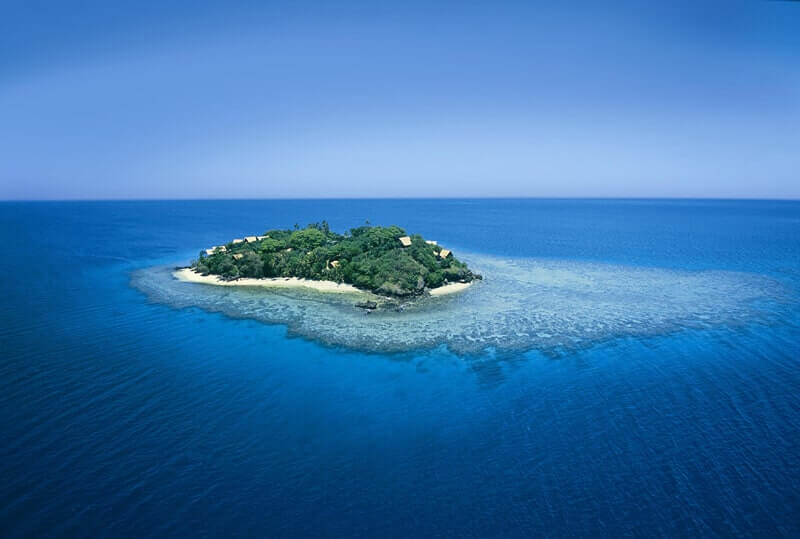 The views when you arrive are pretty good, too. The island has just 16 villas positioned around the island’s volcanic cone to give both ultimate privacy and far-reaching vistas from the airy sitting rooms, bedrooms and wrap-around decks across the lagoon. From here – or cooling off in your plunge pool – you can watch the frigate birds swoop or the turtles and dolphins swim by. At night, you can star gaze even indoors – there are skylights that open at the touch of a button.
The views when you arrive are pretty good, too. The island has just 16 villas positioned around the island’s volcanic cone to give both ultimate privacy and far-reaching vistas from the airy sitting rooms, bedrooms and wrap-around decks across the lagoon. From here – or cooling off in your plunge pool – you can watch the frigate birds swoop or the turtles and dolphins swim by. At night, you can star gaze even indoors – there are skylights that open at the touch of a button.
By day, under the tropical sun, wave upon wave of islands disappear into the distance until they merge with the blue of sea and sky. The closest is Beqa, one of the most fascinating of Fiji’s 323. It was here that around 2000 years ago, the chief was offered various gifts by the gods that he rejected until they suggested the ability to walk on hot coals. Ever since the inhabitants of this island are uniquely able to fire walk. The men have to undergo a four-day purification (including no contact with women, drink or kava) but it is not as simple as mind over matter – the soles of their feet don’t show any sign of burns, not even a blister. No one has ever come up with a satisfactory explanation – the locals simply accept it: it is their gift. But you can decide for yourself. Once a week, Royal Davui invites the firewalkers over to demonstrate their uncanny ability to the guests.
If you want to meet the locals on their own territory, a village visit will introduce you to the children at the school – who sing and dance for you – and a kava ceremony with the elders. Kava is Fji’s favourite drink, a mild narcotic made from the root of a pepper plant (Piper Methysticum), which is pounded to a powder and mixed with water. It has to be said that it looks – and tastes – like dirty dishwater but it is served with great ceremony and, in drinking it, you become an honoured guest.
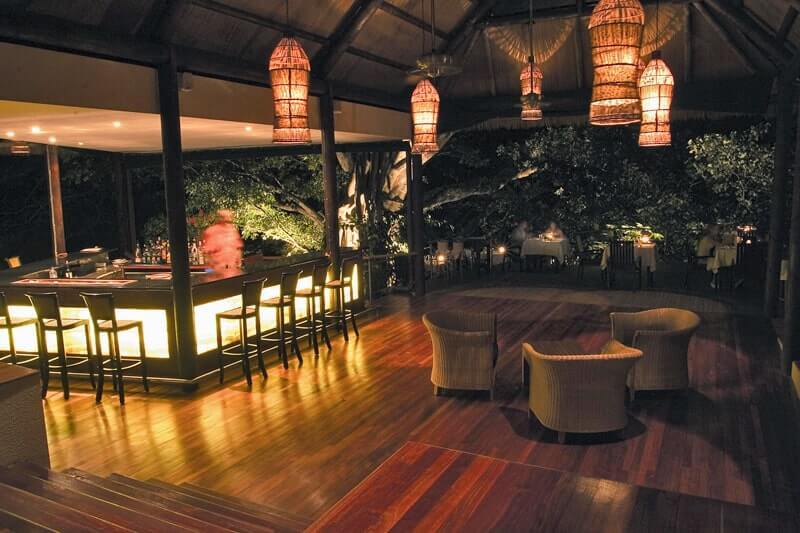 More conventional drinking takes place in the open-air restaurant and bar, built around a huge banyan tree. The menu is short but good – the general manager used to be a chef and you can tell – presentation and service are superb. All the produce is as local as possible and organic, much of it coming from Beqa. The fish, of course, comes straight out of the sea. At breakfast (and this is before you order) a plate of pawpaw, pineapple and orange is served with the best croissants this side of Paris. If you don’t chase them away, the local mynah birds (here they come with the additions of a splash of red and a slightly punk hair cut) swoop down for a beakful of the jam served stylishly on spoons on the side of the plate and take great gloops of it till it drips off their beaks.
More conventional drinking takes place in the open-air restaurant and bar, built around a huge banyan tree. The menu is short but good – the general manager used to be a chef and you can tell – presentation and service are superb. All the produce is as local as possible and organic, much of it coming from Beqa. The fish, of course, comes straight out of the sea. At breakfast (and this is before you order) a plate of pawpaw, pineapple and orange is served with the best croissants this side of Paris. If you don’t chase them away, the local mynah birds (here they come with the additions of a splash of red and a slightly punk hair cut) swoop down for a beakful of the jam served stylishly on spoons on the side of the plate and take great gloops of it till it drips off their beaks.
You can, though, eat on your private terrace or take a picnic anywhere around the island or to the sand spit that appears above the waterline for just a few hours a day – and that really is as close to a desert island as you can get, with just the sea birds for company. There is exceptional snorkelling, diving, sailing and fishing or you might just want to take a lazy kayak around the island or have a massage in the spa. And if you’re still not feeling relaxed, there is even a special pillow menu.
French Polynesia
It was Gauguin who immortalised the Tahitian islands and they retain today a pronounced French accent. This is not merely in the food and the language, but in their very sophisticated European style – something Le Taha’a, the only Relais & Chateau resort in the South Pacific, has in spades. 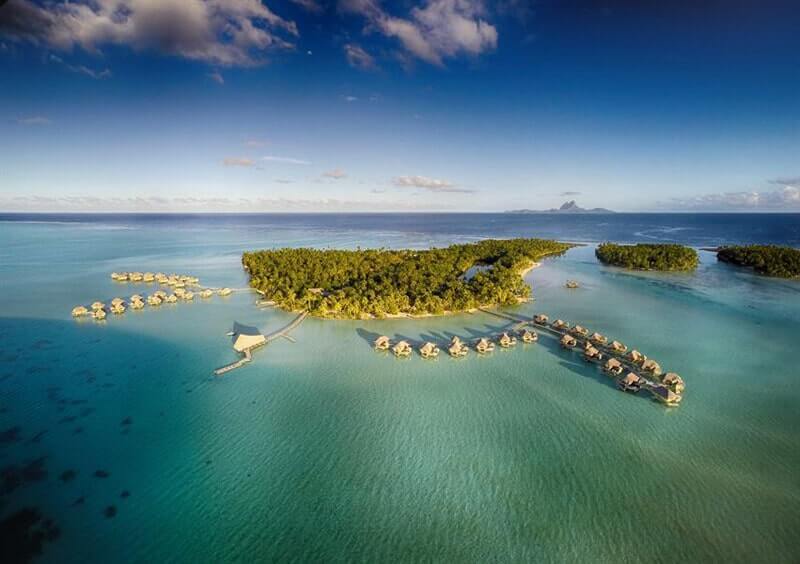 Set on a private motu, or mini-island, it reaches out beyond the shore into the luminous lagoon shared by the islands of Raiatea and Taha’a. A series of boardwalks leads to 48 bungalows standing on stilts over the water and flooded with turquoise light, not just from the conventional windows but from the ones that look down into the lagoon – there’s even one at the foot of the bed that you can lift up to feed the fish. The warm, translucent water becomes your element and there are steps down into the lagoon, so you can swim or snorkel from your room.
Set on a private motu, or mini-island, it reaches out beyond the shore into the luminous lagoon shared by the islands of Raiatea and Taha’a. A series of boardwalks leads to 48 bungalows standing on stilts over the water and flooded with turquoise light, not just from the conventional windows but from the ones that look down into the lagoon – there’s even one at the foot of the bed that you can lift up to feed the fish. The warm, translucent water becomes your element and there are steps down into the lagoon, so you can swim or snorkel from your room.
There are three restaurants – two of them built in the trees – but if you prefer some desert island solitude, you can have your breakfast delivered by canoe and served by a Polynesian waitress on your extensive terrace. You can have lunch – the best of the local fruits and seafood – on an even tinier motu. Dinner can be served by candlelight on your terrace or you can take a flower-bedecked traditional canoe to a moonlit beach and enjoy your own private Polynesian music and dance performance.
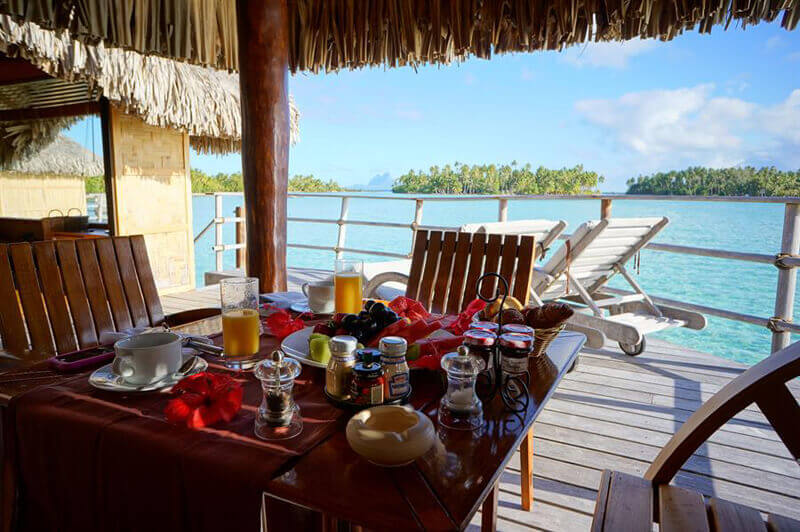 This is, in fact, the mythic birthplace of the whole Polynesian race. Just across the lagoon on nearby Raiatea is Polynesia’s most sacred marae (open-air temple), Taputapuatea, ancient witness to life in the South Pacific before the coming of the Europeans and believed to be Havai’i, the centre from which all of eastern Polynesia was colonised.
This is, in fact, the mythic birthplace of the whole Polynesian race. Just across the lagoon on nearby Raiatea is Polynesia’s most sacred marae (open-air temple), Taputapuatea, ancient witness to life in the South Pacific before the coming of the Europeans and believed to be Havai’i, the centre from which all of eastern Polynesia was colonised.
This is a culture that has beauty at its very heart – not just in the natural beauty of the islands and the people themselves, but in song and sensuous dance, flowers scattered as decoration or worn behind the ear – and pearls. Flawless pearls are farmed in the lagoon just beyond the resort and, while generally termed black, they come in silvers, greys, pinks, blues and greens of such luminescence they could only have come from here.
Cook Islands
Strictly speaking, Pacific Resort is not on its own private island, but it is so well hidden it feels like one. It also happens to be set on a tiny island on the edge of what is probably the world’s most beautiful lagoon, Aitutaki. The second of the Cook Islands it is, in truth, mostly water. A few scraps of land cling to the coral reef but Aitutaki is really about its spectacular triangular lagoon. The water seems to dance with light whether it shines crystal opal, pellucid turquoise or deep lapis lazuli. On the sandy bottom – and this is the whitest sand you’ll ever see – are blue starfish and giant clams while shoals of dazzling fish swim up to feed from your hand and you might find yourself swimming with a turtle.
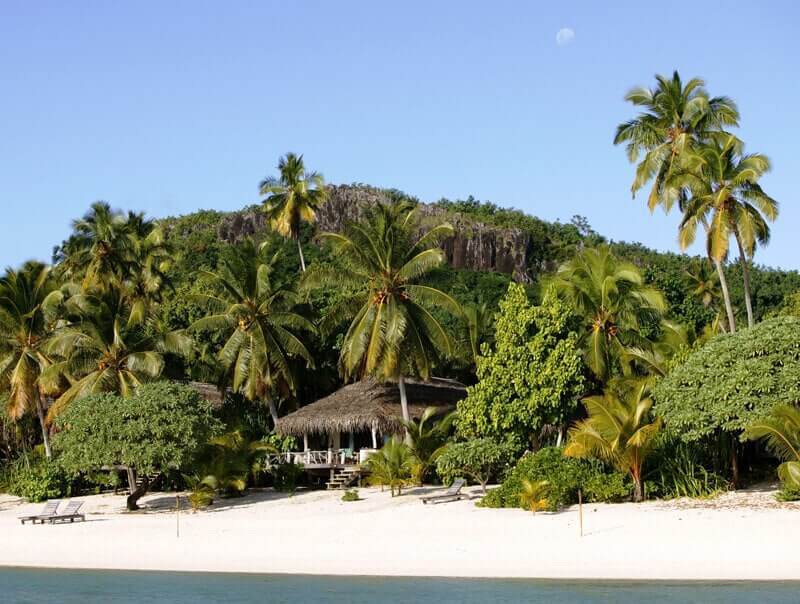 Aitutaki is a quiet island, even by South Pacific standards, where the sun demands indolence in everyone in the heat of the day. At Pacific Resort – the only five star in the Cooks – they have relaxation down to a fine art. The big split level beachfront villas are completely private and perched on black volcanic rocks with a staircase down to the beach, private sundecks and gardens and panoramic views of the lagoon. You can go on a lagoon cruise, snorkel with the fish, sail, kayak and dive or visit one of the tiny uninhabited motus for a picnic.
Aitutaki is a quiet island, even by South Pacific standards, where the sun demands indolence in everyone in the heat of the day. At Pacific Resort – the only five star in the Cooks – they have relaxation down to a fine art. The big split level beachfront villas are completely private and perched on black volcanic rocks with a staircase down to the beach, private sundecks and gardens and panoramic views of the lagoon. You can go on a lagoon cruise, snorkel with the fish, sail, kayak and dive or visit one of the tiny uninhabited motus for a picnic.
Did I say it was quiet? There is one exception – singing in all its forms. Sunday services are recommended and the oldest church in the country is on Aitutaki. The words “Tapu, tapu, tapu” are emblazoned above the altar (“holy, holy, holy”) and the locals sing unaccompanied four-part harmonies toraise the roof.
And then there’s Island Night – always on a Friday as Saturday turns into the Sabbath at midnight when you can’t be caught partying. Island Night means having a good time and in the Cooks that means one thing – dancing. Cook Islanders are generally reckoned to be the best dancers in the Pacific. This is high octane South Seas – swaying hips, garlands of flowers, fearsome warriors, dancers who generally go on to dance some more at the local club, Spiders – join them if you can keep up!
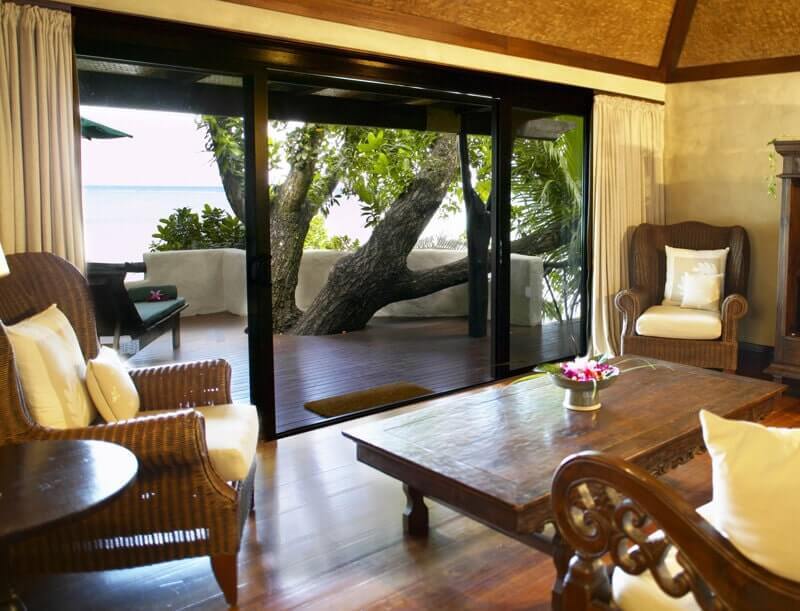 The Cook Islands are very widely scattered and the shallow lagoon means most yachts won’t make it inside the reef. Air travel, though, came to Aitutaki early. The TEAL (Tasman Empire Airlines Ltd) flying boat stopped here in the Fifties carrying passengers like Marlon Brando and the Crown Prince of Tonga. Sadly, that romantic form of travel has long gone but Aitutaki’s air strip has now been tarred – it was crushed coral until just a few years ago – and extended, so you can land a private plane or take a local Air Rarotonga flight (the Cook Island’s own airline) from the capital, Rarotonga.
The Cook Islands are very widely scattered and the shallow lagoon means most yachts won’t make it inside the reef. Air travel, though, came to Aitutaki early. The TEAL (Tasman Empire Airlines Ltd) flying boat stopped here in the Fifties carrying passengers like Marlon Brando and the Crown Prince of Tonga. Sadly, that romantic form of travel has long gone but Aitutaki’s air strip has now been tarred – it was crushed coral until just a few years ago – and extended, so you can land a private plane or take a local Air Rarotonga flight (the Cook Island’s own airline) from the capital, Rarotonga.
The South Pacific, by virtue of its very remoteness, still remains relatively undiscovered, so if you’re looking for your luxury desert island with no noise, traffic or intrusions, this is surely the place to go. Take a good book, a sun hat and let the islands slow you down to a pace of life where your senses unravel by day and the murmur of waves on the beach lulls you to sleep at night.
